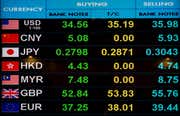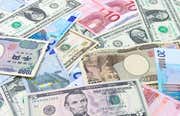The currency markets are the largest and most actively traded financial markets in the world with a daily trading volume of more than $5.1 trillion (Triennial Central Bank Survey 2016). The majority of this trading is concentrated in the world's major financial centers such as London, New York and Tokyo. Large institutional investors such as banks, multinational corporations, hedge funds and central banks constitute the majority of the market activity. To knowledgeably compete in this overwhelmingly institutional marketplace, individual investors need to assimilate as much information as possible. This tutorial provides an overview of basic foreign currency (forex/FX) trading strategies, the markets for those strategies, and an examination of some of the most popular currencies traded.
How do currency transactions work?
Each transaction in the currency market involves two different trades: the sale of one currency and the purchase of another. The two currencies involved in the trade are known as a pair. While it is possible to swap virtually any currency for another, the majority of trading occurs among a handful of popular currency pairs. (For more on this topic, check out Reading a Forex Quote)
|
Currency |
Market Share |
|
87.6% |
|
|
31.3% |
|
|
21.6.3% |
|
|
12.8% |
|
|
6.9% |
|
|
5.1% |
|
|
4.8% |
|
|
4% |
|
|
SEK |
2.2% |
|
MXN |
2.2% |
|
NZD |
2.1% |
|
SGD |
1.8% |
|
HKD |
1.7% |
|
NOK |
1.7% |
|
KRW |
1.6% |
|
Emerging Market Currencies |
21.2% |
|
Figure 1: The most heavily traded currencies and their market share |
|
Source: BIS Triennial Survey, 2016 |
The chart shows the most heavily traded currencies and their market share. Total market share adds up to 200% because each transaction involves two currencies (ECB: BIS Triennial Survey 2016).
USD
As the world's reserve currency, the U.S. dollar is the most actively traded currency, and pairs involving the dollar make up the majority of transactions. In fact, the U.S. dollar was on one side of 88% of all trades in April 2016, up slightly from 87% in April 2013. Therefore, this tutorial examines the trading relationships between the U.S. dollar and several of its chief counterparts, including the euro, the Japanese yen, the British pound, and the Swiss franc. The tutorial also examines other popular trading pairs involving the U.S. dollar and the commodity currencies – those of Canada, Australia, and New Zealand.
Although the average trader will likely participate only in trades involving the U.S. dollar, this tutorial includes a discussion of cross rate pairs – pairs of significant international currencies that are not the U.S. dollar. Additionally, because emerging markets form an important part of the global financial system, this tutorial also examines the unique challenges facing individuals interested in trading emerging market currencies.(For more information, read The Foreign Exchange Interbank Market.)
Before the discussion of popular trading pairs, a brief analysis describes some of the instruments, concepts and strategies that should be familiar to investors trading in the currency markets. (For a quick refresher, check out: Forex Market Basics)
Forex Currencies: Trading Strategies
-
 Trading
Trading6 top-traded currencies and why they're so popular
Every currency has specific features that affect its underlying value and price movements in the forex market. Learn why these currencies are especially popular for trading. -
 Trading
TradingTop 5 Hardest-Hit Currencies
The value of a country's currency is dependent on many factors that will cause it to fluctuate, relative to other world currencies. -
 Trading
TradingUnderstanding Forex Quotes
When trading in forex, all currencies are quoted in pairs. Find out how to read these pairs and what it means when you buy and sell them. -
 Trading
TradingWhat Makes the EUR/USD A Risky Trade Now?
What are the current risks of trading the EUR/USD pair? The Fed may raise interest rates this summer and the ECB has begun a quanitative easing program.



